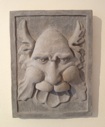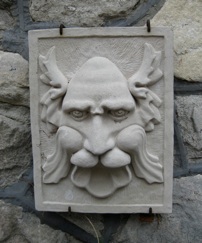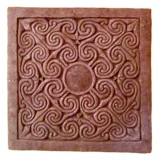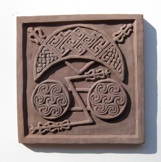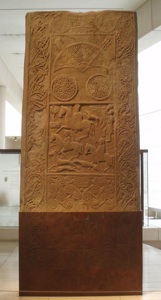

Here are some old stones that got me inspired in my own work.
Ancient Stones
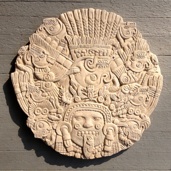

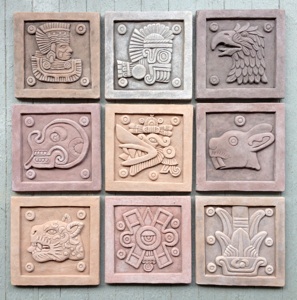
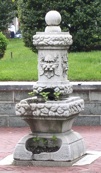


The symbols on this stone represent dates from the Aztec calendar. The symbols at the corners represent the four ages past.The middle symbol for movement is the current age. The bottom center symbol 11 Reed is for 1503 the year the stone was carved. The crocodile figure at the center top is for July 15th the coronation day of Montecuhzoma. This stone is in the collection of the Art Institute of Chicago
The old public drinking fountain in front of the courthouse in West Chester, Pennsylvania. This fountain was the thoughtful gift of Mrs. Mary A. Hickman in 1869 to the town. There was a fountain for people, a trough for horses, and a basin at the bottom for dogs. Although this fountain no longer works I admire the utility of this mostly ignored piece of public art and modeled a several likenesses of the “Green Man” face from photographs.
This is what is believed to be Tlaltecuhtli the Earth God or Godess. This image was carved on the bottom of an Aztec cuauhxicalli, a stone bowl that held offerings. During Spanish colonial times it was used as a sink or pool in the Convent of SanFrancisco It was rediscovered in 1800’s and is now in the National Museum of Anthropology in Mexico City.
West Chester Drinking Fountain
Tlaltecuhtli - Aztec Earth God
Pictish Carvings in Scotland
Stone of the five suns
Coronation stone of Motecuhzoma II
This stone set me off onto reproducing the 20 day signs of the Aztec calendar in 8 inch square reliefs that I have been casting in concrete.
I thought this was an interesting object to sculpt from photographs. I came across several different explanations of what this image represents. After casting duplicates, I took it a step further and painted the image using Aztec artifacts and codexes as a guide.The painted versions make it a little easier to pick out what is going on, I still don’t completely understand what it all represents. In 2006 a 12 ton monolithic sculpture of Tlaltecuhtli was unearthed in the heart of mexico city, so knowledge of this culture is growing every year.
Pictish standing stones are found in Northern Scotland. They were carved by the picts somewhere between 6th and 9th centuries. There are many older Pictish carvings around but our understanding of the picts seems to be fairly sketchy. The “crescent and V - rod”” and the “double disc and Z - rod” are reoccurring symbols whose meaning is uncertain after more than a thousand years. This picture is of the Hilton of Cadboll Stone.The carvings of people and creatures are wonderful.
